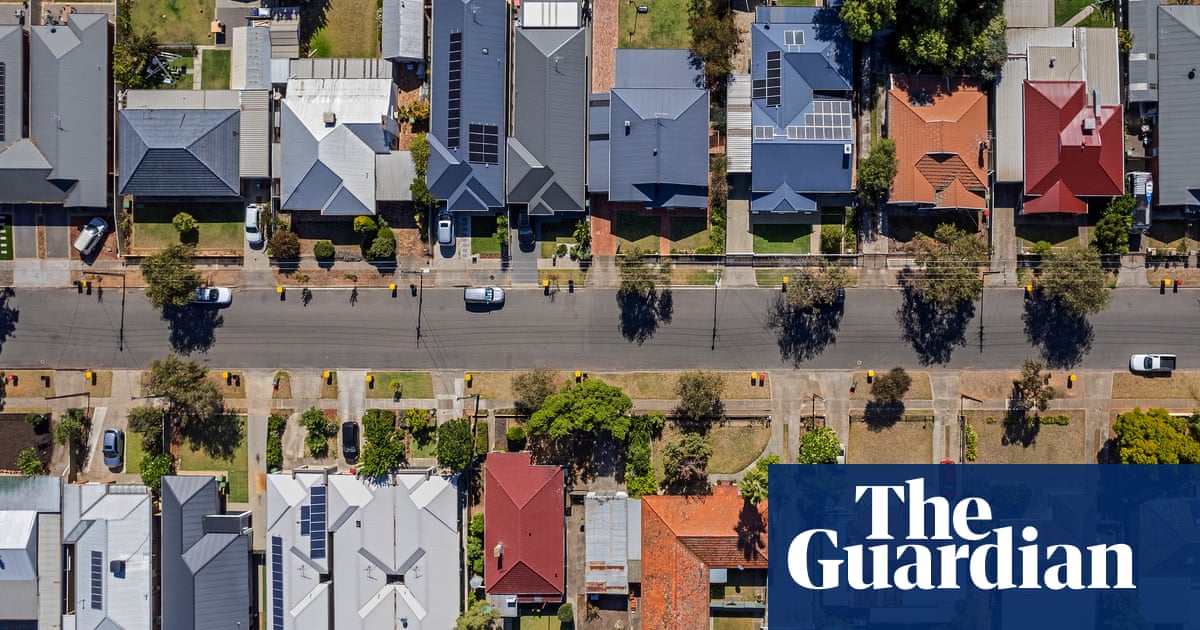When people think ofAdelaide, they may ponder its good food and wine or its many churches. Historically, it was viewed as a well-priced place to live and work.
But years of surging property prices have made it less affordable than some of the world’s most famous cities, including London and New York, when income levels are factored into living costs.
Even those with a front row seat to the change have trouble comprehending it.
“It is a shock for someone like myself, who was born and bred here and always thought of Adelaide as being one of the most affordable places to live with the quality of lifestyle that we have,” says David King, a property agent who assists buyers entering the market.
“The traditional first-time buyer is now being priced out of houses and that has led to a quite large increase in unit prices across Adelaide. Now even a unit is becoming out of reach.”
King, a buyer’s agent at property group Cohen Handler, says prospective buyers in Adelaide are frustrated.
“There are people who come to us often through a level of frustration that they’ve been out there looking and missing out on so many different properties. They are just sick and tired of being out there every weekend.”
Adelaide is the sixth least affordable metropolitan market listed in the recent Demographia InternationalHousingAffordability report, which measures housing costs to income in 95 markets across eight nations.
The South Australian capital, which is less affordable than global cities such as San Francisco, Chicago and Toronto, is now Australia’s second-least affordable city, after the perennially expensive Sydney.
While Hong Kong is at the top of the list, it is suffering from a depressed housing market, in a trend that will probably soon give Sydney the unenviable title of world’s most unaffordable city.
Demographia blames a global affordability squeeze on governments using urban containment strategies, which it defines as a focus on densifying housing within city boundaries as opposed to expansion.
Australia has also beengripped by concernsthat state and federal government policies are fuelling demand through their policies, without adequately addressing supply.
While housing affordability across the country deteriorated during the Covid pandemic, as wages fell behind rocketing home values, most of Australia’s major cities have been expensive for decades.
Some of the biggest price gains occurred in the late 1990s and early 2000s, with near double-digit annual percentage gains, backed by the “increasingly significant role” of investors pumping up demand, asnoted by Treasury at the time.
This coincided with the Howard government’s 1999 decision to reduce capital gains tax for investors.
Home prices as a multiple of Australians’ incomes have more than doubled since 1980, according to the OECD’s measure. The same figure has only risen by half as much in the UK and barely moved in the US.
Sign up for Guardian Australia’s breaking news email
Prof Hal Pawson, an expert in housing policy at UNSW, said that affordability has deteriorated faster in Australia than in most comparable countries as bigger tax exemptions allow investors and owner-occupiers to pour more money into the sector.
“Australia’s a country that, probably to a greater extent than even other anglophone countries, has an obsession with property as a place to put your money,” Pawson says.
Geography also plays a part. Australia’s layout and remote centre mean people congregate towards big coastal cities, contrasting with the more common practice across Europe and the US of inland cities.
Adelaide, now less affordable than the more heavily populated Melbourne, is a good example of a city being squeezed by its terrain, given that it is locked between the ocean and the hills.
Recent coverage of Australia’s housing crisis has focused on soaring demand and sluggish supply of new homes, with growing city populations held back by rising construction costs and lengthy project approval processes.
But in Germany, which also faces those issues, incomes have grown faster than home prices over recent decades, making property more affordable.
Housing enjoys fewer tax breaks in Germany, while rent caps and stronger protections for tenants mean much of the population is happy to rent long-term.
Christian Danne, a Berlin-based economist, says price-income comparisons hardly apply because half the population isn’t looking to buy a home.
“Ever since the 1950s, it’s a renters’ market,” he says.
“The most prized possession in the UK and Ireland is your house, but for a very long time in Germany, the most important status symbol was your car.”
More than half the German populationrenteda home in 2024, whereas only about a third of Australians are tenants.
Amid a shortage of housing stock, rents for new tenants have been rising fast in Germany, putting pressure on young people and migrants entering the market. But those already settled into a rental are usually spared the steep increases.
“Price increases are very predictable once you’re living in a place, so there’s literally no incentive to buy and own a place other than personal preference,” says Danne, a consultant at DIW Econ.
Australia has seenbigger hikesin both existing and new rent costs in the last five years, with average rent prices up nearly 20% and the advertised price of new rentals up nearly 50%.
Affordability advocates in Australia arefocusing their attention on rental rights, which are a state issue.
The thinking is that improving tenancy rights may lower the value of rental properties and depress rental prices, easing affordability at the expense of landlords, as it does in some overseas markets.
Bruce Djite, the South Australian executive director at the Property Council of Australia, says Adelaide’s past affordability advantage has been “completely eroded” and policymakers aren’t reacting by increasing supply fast enough.
“We are not acting like we’re in a crisis [but] a lot more needs to be done,” Djite says.
“If we continue on like this, we will get a reputation for not just being unaffordable, but being completely inaccessible.”
